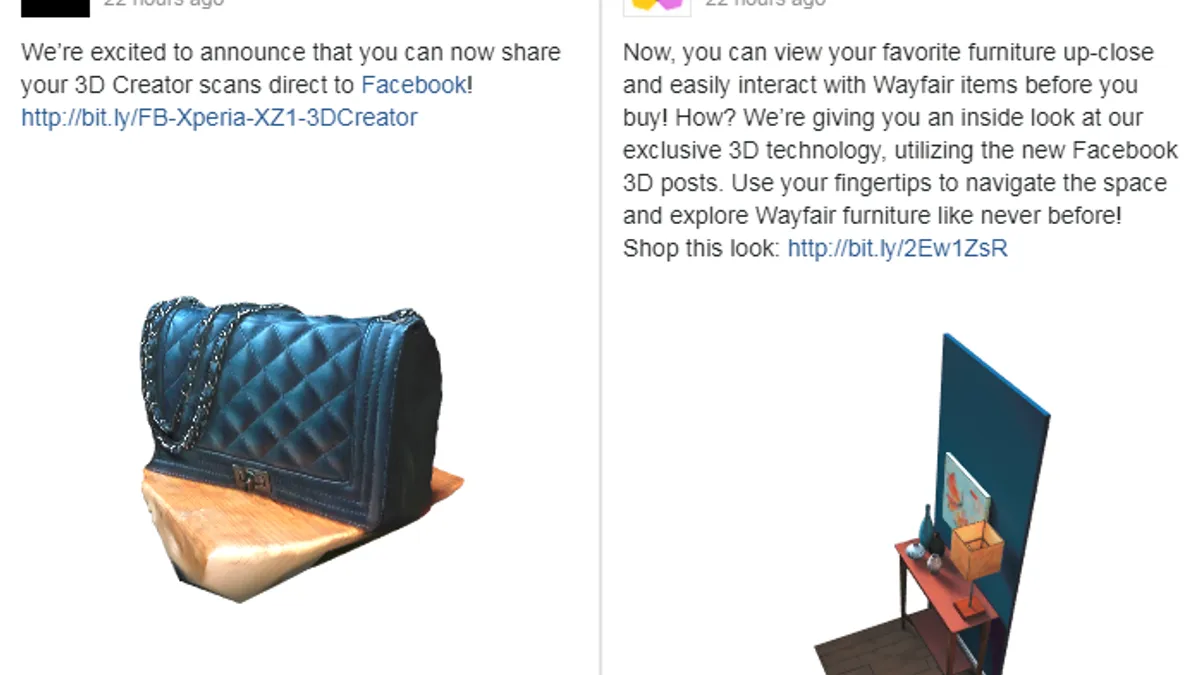Dive Brief:
- Facebook is upgrading its News Feed interactive 3-D models, according to a company blog post. Facebook 3-D posts, introduced in October last year, now support gITF 2.0, an industry standard file format that allows for better textures, lighting and realistic renderings of rough and shiny objects.
- With the new Graph API endpoints, developers and brands can build 3-D modeling apps or 3-D cameras that share directly to News Feed and make websites show up as 3-D posts. Users can drag and drop 3-D objects into the feed and bring 3-D posts into Facebook Spaces, the company's virtual reality (VR) rooms. Users can choose a background and texture color for 3-D posts.
- Facebook's next step is getting the 3-D objects to be shareable across platforms, including augmented reality (AR), VR and on the News Feed. Lego, Sony, mobile developer Supercell's game "Clash Royale" and Wayfair are some of the brands that are already experimenting with the 3-D models, with interactive demonstrations attached in the blog post.
Dive Insight:
With the news, Facebook 3-D posts are looking more like they might deliver serious value to marketers, who have been trying to figure out how to fit AR and VR into their brand strategies without getting tangled up in cumbersome hardware or complex technology development. Letting consumers test out or play with products directly on Facebook would deliver an easy-to-access and immersive experience, with the ability to link back to a product site for purchase or more information, as is the case with static and video ads. Users could also share 3-D content if they find it fun and relevant enough to their News Feed experience, broadening a brand's reach.
More brands are experimenting with AR, VR and interactive 3-D formats by creating both in-store and mobile experiences on apps like Snapchat as a way to help their products stand out. Ikea used a VR experience at a new store opening and, like many retailers such as Wayfair, has a standalone AR app that lets consumers see how furniture and other items would look in their homes. VR ads aid same-day recall for 70% of viewers across different formats, including pre-roll video, branded logos and 3-D branded objects, according to a YuMe study of in-game ads. About three-quarters of consumers also said VR ads were less intrusive than other digital ad formats.
Facebook has been focused on adopting bleeding edge content formats, including 360-degree photos and video, AR and GIFs, to remain popular with millennials and Gen Zers, who are more frequently leaving the platform for competitors like Snapchat. The 3-D posts could position the social network ahead of other platforms by offering new and innovative ways for users to create and share content.














